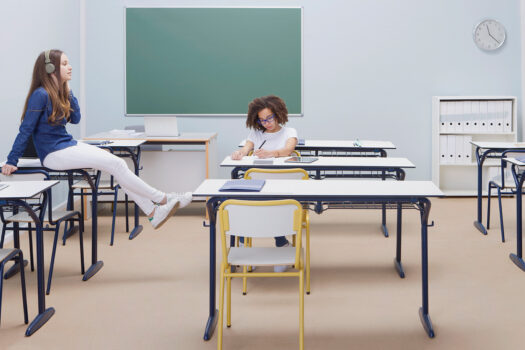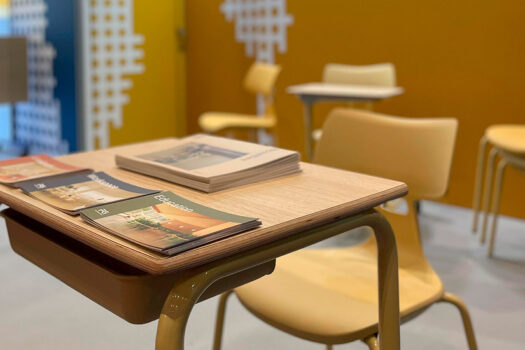We interviewed Marta Grañó, researcher and advocate in Education and Entrepreneurial Initiative. She combines her teaching activity at ESADE as an academic collaborator and tutor in Entrepreneurship subjects with her doctoral research on Education and Entrepreneurial Initiative. She holds a degree in Business Administration and Management and an MBA from ESADE.
Education keeps evolving, and nowadays it’s common to hear concepts such as education in values, projects, or multiple intelligences that should be developed in the classroom. What will be the keys to education in the coming years?
Marta Grañó: Education is going to change, and a lot. Personally, I am convinced that the changes will aim at personalizing education for each student, improving skill training, and moving into a system of continuous education, which is essential in our “learning society” to adapt to the ongoing changes.
To achieve this, new pedagogical innovations such as emotional education and the recognition of Gardner’s multiple intelligences are being introduced, and new competencies in education are being worked on, such as the competence of “learning to learn” and fostering the “sense of initiative and entrepreneurial spirit”.
Are we advancing toward personalized learning that takes advantage of each student’s qualities and capabilities? How?
Marta Grañó: Education aims to help each child achieve their maximum personal development in all aspects. Therefore, it is necessary not only to offer content that they must learn or memorize but also to create personalized learning paths that adapt to each student.
Personalized learning is based on the premise that each person is different and learns in a different way, and progress is being made in this area. It requires significant effort from both schools and teachers in this process, where teachers are no longer just transmitters of knowledge but also coaches for their students, in the sense that they must not only teach but also create the necessary conditions for students to learn and grow.
The traditional classroom is gradually giving way to other configurations and possibilities in the relationship between student and teacher, and among the students themselves. How does furniture influence this? What are the real needs it must respond to?
Marta Grañó: The physical environment where classes take place undoubtedly impacts learning. I have always been surprised to see so many schools with classrooms identical to those where I studied years ago. With all the significant changes in the world, how is it possible that classrooms are still arranged the same way they were decades ago, with desks and chairs aligned uniformly in front of the blackboard and the teacher? These types of classrooms were designed for an education system based on the transmission of knowledge, a system based on listening and repeating answers.
But today, repeating answers is no longer enough. In a world where everything changes rapidly, the learning system is different, and students now have a more active role in their learning system. Group work is important, skills like communication should be enhanced… and all of this leads us to a model of classrooms that promotes greater interaction between students and stimulates children’s creativity.
Tables and chairs that can be arranged in different ways depending on the task being performed, comfortable spaces where students can work individually or in groups, and areas for students to give public presentations.
The University of Salford has analyzed the impact that the classroom environment has on the learning process and concluded that an optimal classroom environment can improve student performance by 25%.
How important are the qualities and distribution of that furniture when considering different educational stages, such as early childhood, secondary, and higher education?
Marta Grañó: Each age group has its specific needs. Although there are common elements, such as areas for group work or the importance of natural light in classrooms, it is evident that classrooms in early childhood education require play areas, large cushions, and age-appropriate furniture.
For older students, in addition to the versatility of the classrooms, creating an area with seating for better communication is a good idea, as it encourages students’ proactivity, helps them acquire the habit of speaking in public, and emphasizes that the students are the protagonists.
What advice would you give to schools and teachers considering configuring a classroom for the next school year?
Marta Grañó: To improve classroom configurations, it’s always a good idea to visit other schools that have already taken this step, to see firsthand how the new classrooms are set up and observe how students move within them. From there, a detailed analysis should be conducted to evaluate whether the system adopted in those schools is the best fit for my school, as some aspects may be very valid, but others may not be as suitable.
In the talks you give to teachers, what are their main concerns in general and, in particular, regarding furniture?
Marta Grañó: Teachers, as education professionals, are interested in knowing which classroom layouts work best for students, and their questions generally revolve around this.
They particularly ask about tiered seating but also about the teachers’ area in such schools, which is usually a “fishbowl” type of space, adjacent to the classroom, separated visually by glass.
The fact that the world has changed is nothing new, and the need for new educational models is nothing new either. Now it’s time to put things into practice and work within the framework of new systems. Pedagogical methodologies are changing. If we see that libraries and museums have introduced architectural changes to adapt to the times, it’s clear that schools will need to do the same. The transformation of the classroom is an integral part of educational change.



